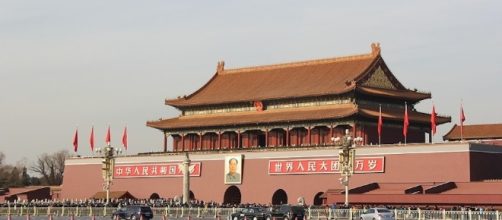While #Donald Trump ’s first four weeks as President have been dominated by domestic issues and accusations of Russian interference in his election victory, North Korea’s missile test last week was a reminder that Asia has the potential to cause major problems for his administration. China, India, Pakistan, Indonesia and North Korea could become the grounds where his foreign policy would be most tested.
China
Undoubtedly China is already an economic super power and is one of America’s greatest commercial rivals, a fact already acknowledged by the 45th President when talking about “making America great again”.
Yet the Asian giant also has ambitions to become a true military superpower in its own right and not just on the coat tails of Russia, as it was in the past.
The development of new combat aircraft and navy ships, the building of artificial islands in the South China Sea shows military ambitions which are worrying such traditional American allies as Japan and South Korea.
The new Administration will need to keep a sharp eye on its rival because it is fast becoming an even bigger threat than it was before. At the same time, even though it is now more independent from Russia, history has shown that it will not hesitate to act together with the former Soviet Union if the needs require.
These developments will give Donald Trump and his new Secretary of State Rex Tillerson much work to do and not only because China is also a key to controlling the rogue North Korea.
India and Pakistan
The Indian sub continent comprised the former British colony of India. Mahatma Gandhi had warned the British not to separate the Hindus and the Moslems when the colony was divided and time has proven him correct.
The three wars between them since their independence and the regular incidents at their shared border are proof that this rivalry could once again explode. The fact that both countries are also amongst the world’s biggest buyers of arms indicates that such a war would be truly disastrous.
Furthermore, long term tensions between India and China could also contribute to a clash between the two Asian giants which may also draw in Pakistan which would want to take advantage of any Indian distraction.
Indonesia, Malaysia, the Philippines and North Korea
Indonesia is the world’s biggest Moslem country by population and Malaysia also shares the same religion. This makes them targets for ISIS and other fanatics groups and in fact they have suffered attacks in the past. For this very reason they may well provide not only a future battle field for the war on terror, but paradoxically may also be the key to help the United States in finding other solutions for the terrorism that has created the world’s refugee crisis.
The unusual and violent activities of controversial Philippines President Rodrigo Duterte with his war on drug runners which has seen 3,000 people die so far could be a destabilising factor in Asia.
His political ambition and inconstant and at times incoherent behaviour may see him act unpredictably and could even worsen the tensions over Chinese ambitions in the South China Sea.
North Korea, the country now lead by Dictator Kim Jung-un has been a thorn in the side of the United States since the end of the Second World War and will continue to do so for at least the immediate future.
Challenges
These are only a part of the challenges facing the United States and the world from Asia at the present time. They will not be easy to address and the presence of an American President and Secretary of State without diplomatic experience will make it that much harder.
Donald Trump’s current domestic difficulties may well give one of these players the opportunity to make a move, as we saw with the North Korean missile test last week, but the other powers must not be neglected.
The President of the United States is considered the Leader of the free world and Asia could become the supreme test of Donald Trump’s true capabilities in this role.

